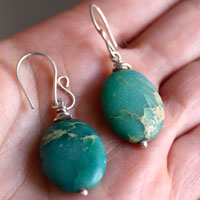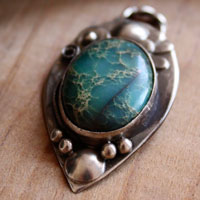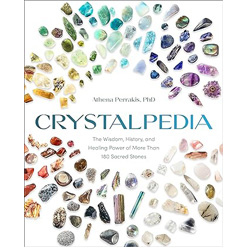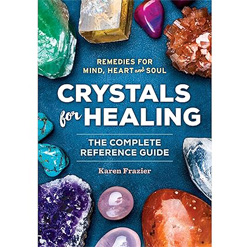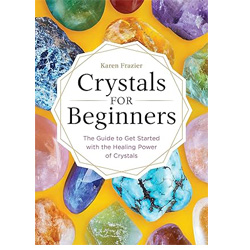- Jewelry
- Inspiration
- Our imagination
- Birthstones
- Celebrating with Eternal Flowers
- Druids and druidesses
- Flower meanings
- History, archeology jewelry
- History and healing properties of metals
- History and healing properties of stone
- Illumination jewelry
- Japanese symbols
- Maya calendar jewelry
- Stone color symbolism
- Stones catalogue
- Wedding anniversaries
- Searches a theme on the site
- Good Deals
- Paintings
- About
- Contact
JEWELRY
- Anklet
- Bracelets
- Brooches
- Cufflinks
- Earrings
- Pendants & Necklaces
- Rings
- Draw your jewelry
- How to clean your jewel
- Metal we used
INSPIRATION
- Our imagination
- Birthstones
- Celebrating with Eternal Flowers
- Druids and druidesses
- Flower meanings
- History, archeology jewelry
- History and healing properties of metals
- History and healing properties stones
- Illumination jewelry
- Japanese symbols
- Maya calendar jewelry
- Stone color symbolism
- Stones Catalogue
- Wedding anniversaries
- Searches a theme on the site
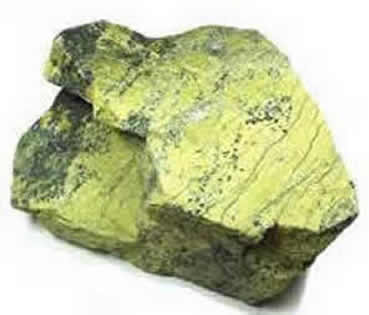
Serpentine: history, healing properties and lithotherapy
Serpentine properties

The serpentine is a group of silicate minerals comprising more than 20 different species, mostly magnesium-rich phyllosilicates. The precise identification of each variety is complex due to the diversity of their chemical compositions and visual appearances, often leading to confusion with other stones such as jade or nephrite.
The serpentine stands out for its wide range of colors, from white to black, with shades of yellow, green, blue, brown, and gray. Olive-green tones are the most common and sought after, giving the stone its characteristic appearance. The surface of the serpentine is often marbled or veined, with a scaly, waxy, or fibrous texture depending on the variety. It is generally opaque to translucent, with a luster that can be greasy, silky, or vitreous.
The name "serpentine" comes from the Latin serpentinus, meaning "serpent stone," due to its appearance reminiscent of snake skin, particularly with its veined patterns and green hues. This stone is primarily composed of hydrated magnesium silicate, with variable inclusions of iron, aluminum, nickel, chromium, cobalt, zinc, and calcium, giving certain varieties distinctive shades and properties.
The three main varieties of serpentine are:
- Antigorite: Generally massive and compact, with a granular structure. It is one of the most sought-after varieties in jewelry and is sometimes mistaken for jade due to its translucent green color.
- Lizardite: Often softer and with a waxy luster, it displays varied shades ranging from green to yellow and brown.
- Chrysotile: A fibrous variety that constitutes the primary form of asbestos. Its microscopic fiber structure makes it toxic when inhaled as dust. However, raw chrysotile is not used in jewelry to avoid any health risks.
In jewelry, the serpentine is appreciated for its attractive appearance and ease of carving. However, some lower-quality varieties are artificially dyed to intensify their colors. As a result, misleading commercial names such as Suzhou jade, Styrian jade, Teton jade, or new jade are used, when in reality, they refer to treated serpentine.
From a geological perspective, the serpentine plays a key role in the formation of ultramafic zones, where soils rich in nickel, chromium, and cobalt limit plant growth. These regions are often called "serpentine barren zones," but some plant species have adapted to thrive there, giving rise to unique ecosystems.
Finally, the most prized varieties, mainly derived from antigorite, are sometimes referred to as "noble serpentine" or "precious serpentine" due to their translucency and jade-like appearance.
Mines: France, the USA, New Caledonia, Canada, Afghanistan, United Kingdom, Greece, China, Russia, Korea, Austria, India, Burma, New Zealand, Norway, Italy.
History, legends and beliefs about serpentine
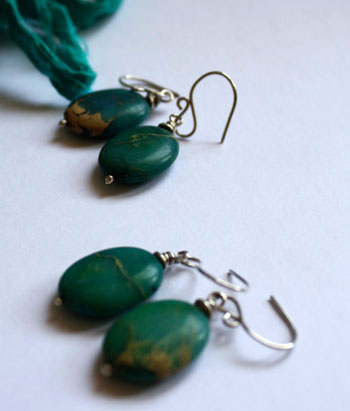
Serpentine has been mined and revered since antiquity by many civilizations, including the Sumerians, Assyrians, Persians, and Egyptians, who used it for the creation of seals and cylinder seals. Thanks to its greasy and oily surface when polished, it prevented clay or wax from sticking to the seal, making it easier to use in administration and trade. From the emergence of the Mesopotamian cylinder seal around 3500 BCE, serpentine became one of the preferred materials for these objects, alongside steatite and lapis lazuli.
In the Roman Empire, serpentine was widely used as a decorative and ornamental stone. Known as lapis atracius, it was employed in the making of columns, wall claddings, statues, and mosaics. A specific variety, ophicalcite, gave rise to famous marbles such as Verde di Genova and Vert Maurin, which were highly prized for embellishing villas, temples, and baths.
During the Middle Ages, European sorcerers and alchemists attributed protective powers to serpentine, believing it could guard against snake bites and poisons. Some accounts even claimed that the stone could extract venom from a wound, reinforcing its association with its very name. This belief spread across various cultures, where serpentine was sometimes ground into powder and mixed into medicinal potions thought to purify the blood and protect against diseases.
In India, the city of Bhera was famous for centuries for its deposits of exceptionally pure serpentine. Indian artisans carved the stone into sculptures, decorative objects, weapon handles, and precious cups. Locally, it was called Sang-i-Yashm, while the British referred to it as "false jade" due to its resemblance to the prized gemstone in Asia.
Among the Māori of New Zealand, a local variety of serpentine was known as Tangiwai, meaning "tears" in Māori. According to legend, the stone was considered the petrified tears of a grieving woman, giving it great spiritual significance. It was used to carve sacred pendants, ceremonial ornaments, and ritual objects, often passed down as family heirlooms or used in rites of passage.
Since 1965, serpentine has been designated as the official state rock of California, USA, due to its abundance and the richness of its hues. However, this distinction has been controversial, particularly since 2010, due to the presence of chrysotile in some varieties of serpentine. As chrysotile is the primary form of asbestos, concerns over potential health risks associated with its extraction and handling have led to debates about whether serpentine should retain its official status.
Additionally, serpentine remains a sought-after stone in architecture and sculpture. It is still used for the cladding of prestigious buildings, particularly in Italy and France, where it adorns churches, palaces, and historical monuments.
Healing properties and benefits of serpentine
Throughout the long history of humanity, many societies have attributed various curative or symbolic properties, virtues, and interpretations to serpentine. The elements presented here are part of a cultural, historical, and descriptive perspective, intended to illustrate the symbolic relationship that has gradually developed between this stone and human civilizations over the centuries. As with previous examples, this information stems from a process of observation and transmission of traditional knowledge. It does not constitute therapeutic or medical advice and does not reflect personal convictions.
- In certain traditions, serpentine is associated with a symbolic role in the metabolism of calcium and magnesium, contributing to the idea of a general balance of metabolic functions. It is sometimes mentioned in popular beliefs for its presumed connection with the regulation of blood sugar levels, particularly in contexts related to hypoglycemia or imbalances linked to diabetes, without these uses being based on established medical evidence.
- Serpentine is also known, in ancient traditions, for its symbolic purifying effect. It is associated with protection against parasitic or bacterial infections and with the support of the body’s natural defenses, these representations forming part of a broader view of the stone as protective and cleansing.
- This stone is likewise linked to the symbolic strengthening of the heart and lungs. It is traditionally associated with improved blood circulation and more harmonious oxygenation of tissues, which explains why it is sometimes mentioned in belief systems in connection with respiratory disorders, asthma, or fluctuations in blood pressure.
- Serpentine is also cited for its association with the relief of bodily tensions. It is symbolically linked to the easing of muscle cramps, menstrual discomfort, and lower abdominal tension, as well as to a harmonizing influence on the digestive system.
- In some traditions, serpentine is associated with hormonal regulation. It is occasionally mentioned for its symbolic role in balancing endocrine functions, and certain beliefs attribute to it the ability to support breast milk production in breastfeeding women.
- Thanks to the regenerative qualities attributed to it in traditional knowledge, serpentine is often associated with healing and tissue repair. It is thus perceived as symbolically supporting the recovery of skin and cells after injury, surgical intervention, or periods of physical fragility.
- On an emotional level, serpentine is described as a stone of grounding and harmony. It is associated with the reduction of stress, anxiety, and intrusive thoughts, encouraging a state of inner calm and the soothing of intense or unstable emotions.
- It is particularly mentioned as accompanying those who seek to overcome emotional blockages linked to the past. In this context, serpentine is perceived as helping to gain perspective, detach from repetitive patterns, and initiate a gradual process of emotional release.
- On a mental level, this stone is sometimes associated with concentration and clarity of mind. It is symbolically linked to enhanced reflective capacity, facilitating decision-making and emotional management during periods of doubt, confusion, or mental overload.
- In certain spiritual traditions, serpentine is considered to facilitate inner work and the awakening of personal energies. It is then associated with a strengthened connection to ancestral wisdom, ancient memories, and the telluric forces of the Earth.
- It is also used, on a symbolic level, as a stone of protection against influences perceived as negative or emotionally toxic environments. This function is often described as the creation of a protective field that supports inner stability and a sense of security.
- Finally, in some cultures, serpentine is associated with a connection to natural forces and nature spirits. This symbolism makes it a stone frequently mentioned in meditation practices, traditional rituals, and shamanism, where it is perceived as an ally that fosters harmony with the natural world and the cycles of life.
 Please note that all healing properties attributed to stones come from ancient traditions and various cultural sources. This information is provided for informational purposes only and does not constitute medical advice. In case of any health concerns, it is recommended to consult a qualified professional.
Please note that all healing properties attributed to stones come from ancient traditions and various cultural sources. This information is provided for informational purposes only and does not constitute medical advice. In case of any health concerns, it is recommended to consult a qualified professional.
Serpentine jewelry samples
To learn more about litotherapy, we recommend you the following books:

